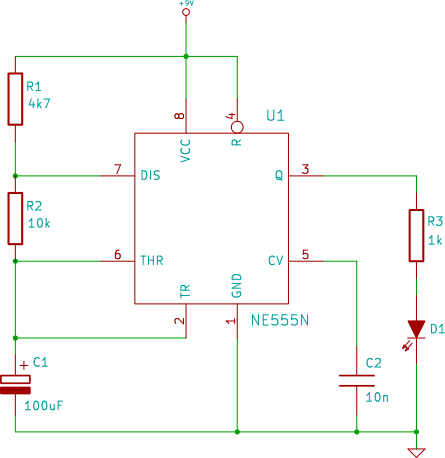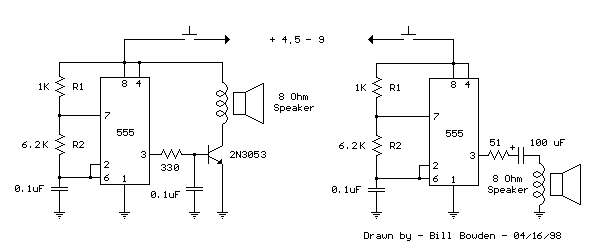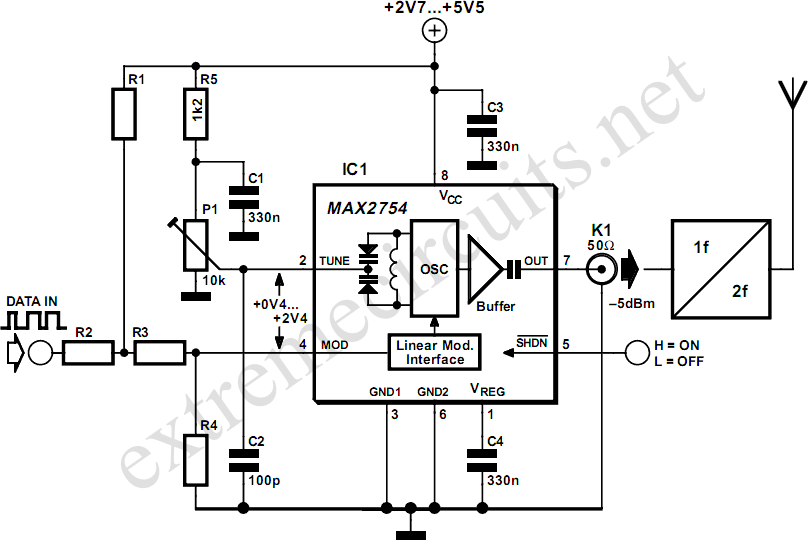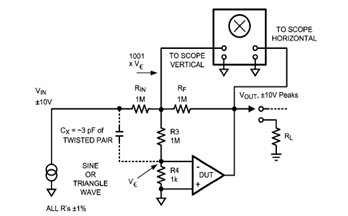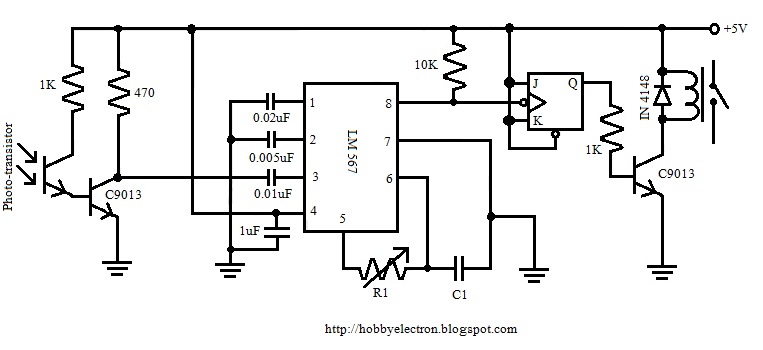
555 ic linear ramp sawtooth

The voltage Vc1 increases linearly when the pull-up resistor RA in the monostable circuit is replaced with a constant current source, resulting in the generation of a linear ramp. The figure illustrates the linear ramp generating circuit and the corresponding linear ramp waveforms. The current flowing through capacitor C1 becomes a constant current generated by a PNP transistor and resistor when the trigger initiates in a timer configured as depicted in the figure below.
In a monostable circuit configuration, the behavior of the output voltage can be significantly influenced by the components used. When the standard pull-up resistor RA is substituted with a constant current source, the voltage across capacitor C1, denoted as Vc1, exhibits a linear increase over time. This is attributed to the constant current flowing through the capacitor, which charges it at a uniform rate, leading to a linear ramp waveform.
The circuit typically employs a PNP transistor to provide the constant current. When the trigger signal is applied, the PNP transistor becomes conductive, allowing a steady current to flow through the resistor and into capacitor C1. The charging process can be described by the relationship I = C * (dVc/dt), where I is the constant current, C is the capacitance, and dVc/dt represents the rate of change of voltage across the capacitor. Since I is constant, the voltage Vc1 increases linearly with time.
The waveform generated by this configuration can be visualized as a straight line when plotted on a graph, with time on the x-axis and voltage on the y-axis. This linear ramp is crucial in various applications, including timing circuits and signal processing, where precise timing and waveform shapes are required.
The resistor in conjunction with the PNP transistor plays a vital role in determining the magnitude of the constant current, which in turn dictates the slope of the ramp. By selecting appropriate values for the resistor and capacitor, designers can tailor the ramp's characteristics to meet the needs of specific applications.
In summary, the integration of a constant current source in place of a pull-up resistor in a monostable circuit allows for the generation of a linear ramp voltage across a capacitor, providing a reliable and predictable output waveform suitable for various electronic applications.The Vc1 increases linearly when the pull-up resistor RA in the mono stable circuit is replaced with constant current source, generating a linear ramp. This is the figure that shown the linear ramp generating circuit and the generated linear ramp waveforms illustration; The current flowing through capacitor C1 becomes a constant current generated b
y PNP transistor and resistor when the trigger starts in a timer configured as shown in figure below. 🔗 External reference
In a monostable circuit configuration, the behavior of the output voltage can be significantly influenced by the components used. When the standard pull-up resistor RA is substituted with a constant current source, the voltage across capacitor C1, denoted as Vc1, exhibits a linear increase over time. This is attributed to the constant current flowing through the capacitor, which charges it at a uniform rate, leading to a linear ramp waveform.
The circuit typically employs a PNP transistor to provide the constant current. When the trigger signal is applied, the PNP transistor becomes conductive, allowing a steady current to flow through the resistor and into capacitor C1. The charging process can be described by the relationship I = C * (dVc/dt), where I is the constant current, C is the capacitance, and dVc/dt represents the rate of change of voltage across the capacitor. Since I is constant, the voltage Vc1 increases linearly with time.
The waveform generated by this configuration can be visualized as a straight line when plotted on a graph, with time on the x-axis and voltage on the y-axis. This linear ramp is crucial in various applications, including timing circuits and signal processing, where precise timing and waveform shapes are required.
The resistor in conjunction with the PNP transistor plays a vital role in determining the magnitude of the constant current, which in turn dictates the slope of the ramp. By selecting appropriate values for the resistor and capacitor, designers can tailor the ramp's characteristics to meet the needs of specific applications.
In summary, the integration of a constant current source in place of a pull-up resistor in a monostable circuit allows for the generation of a linear ramp voltage across a capacitor, providing a reliable and predictable output waveform suitable for various electronic applications.The Vc1 increases linearly when the pull-up resistor RA in the mono stable circuit is replaced with constant current source, generating a linear ramp. This is the figure that shown the linear ramp generating circuit and the generated linear ramp waveforms illustration; The current flowing through capacitor C1 becomes a constant current generated b
y PNP transistor and resistor when the trigger starts in a timer configured as shown in figure below. 🔗 External reference
